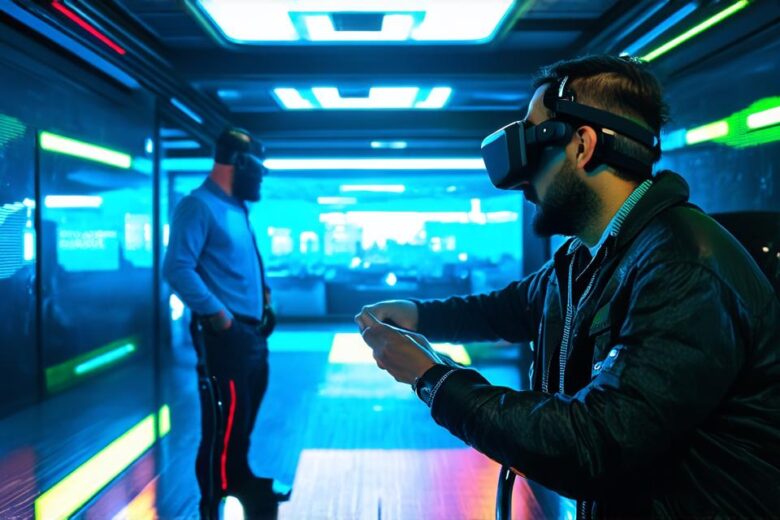Augmented Reality vs Virtual Reality: What’s the Difference?
AR is a technology that overlays digital information on top of the real world, creating an immersive experience for the user. This can include adding virtual objects to physical spaces or displaying additional information about real-world objects. AR apps typically use the camera and sensors on a smartphone to track the user’s location and orientation, allowing them to interact with digital elements in their environment.
On the other hand, VR is a fully immersive experience that creates a simulated environment for the user to explore. This can include anything from a virtual office to an alien planet. VR typically requires specialized hardware, such as a headset and controllers, to create an environment that completely blocks out the real world.
One key difference between AR and VR is the level of immersion. While AR offers a more realistic experience by overlaying digital information on top of the physical world, VR completely immerses the user in a simulated environment. This makes VR ideal for gaming or entertainment experiences, while AR is better suited for practical applications like training and education.
Another difference between AR and VR is the level of interaction. AR apps allow users to interact with digital elements in their physical environment, while VR typically requires users to use controllers or other input devices to interact with the virtual world. This makes AR more intuitive and easier to use, as it doesn’t require any special equipment or training.
Real-Life Examples of AR vs VR in Action
One example of AR in action is the popular game Pokemon Go, which uses the camera on a smartphone to overlay digital creatures on top of the real world. This allows players to hunt for virtual monsters in their physical environment, creating an engaging and immersive experience that blends the real and digital worlds.
On the other hand, VR is commonly used in gaming and entertainment experiences. For example, the popular game Beat Saber uses VR headsets and controllers to allow players to slash through virtual blocks with lightsabers set to music. This creates a fully immersive experience that transports players into a virtual world filled with rhythm and motion.
Case Studies in AR and VR Development
One example of successful AR development is the app Ikea Place, which allows users to visualize how furniture would look in their home before making a purchase. This app uses AR to overlay digital images of IKEA products onto the user’s physical environment, allowing them to see how the furniture would fit and look in their space.
In contrast, VR development is often focused on creating fully immersive experiences for gaming or entertainment purposes. For example, the game Half-Life: Alyx uses VR headsets and controllers to create a completely immersive experience that transports players into the virtual world of Half-Life.
Expert Opinions on AR vs VR
According to Dr. Richard Nisbet, a professor of cognitive psychology at Georgetown University, AR is better suited for practical applications like training and education. He believes that AR provides a more realistic experience by overlaying digital information on top of the physical world, making it easier for users to interact with real-world objects.
On the other hand, Dr. Nisbet believes that VR is best suited for gaming and entertainment experiences. He notes that VR provides a fully immersive experience that transports users into a virtual world, allowing them to escape from reality and explore new worlds.
FAQs on AR vs VR
Q: What’s the difference between AR and VR?

A: AR overlays digital information on top of the real world, while VR creates a fully immersive simulated environment.
